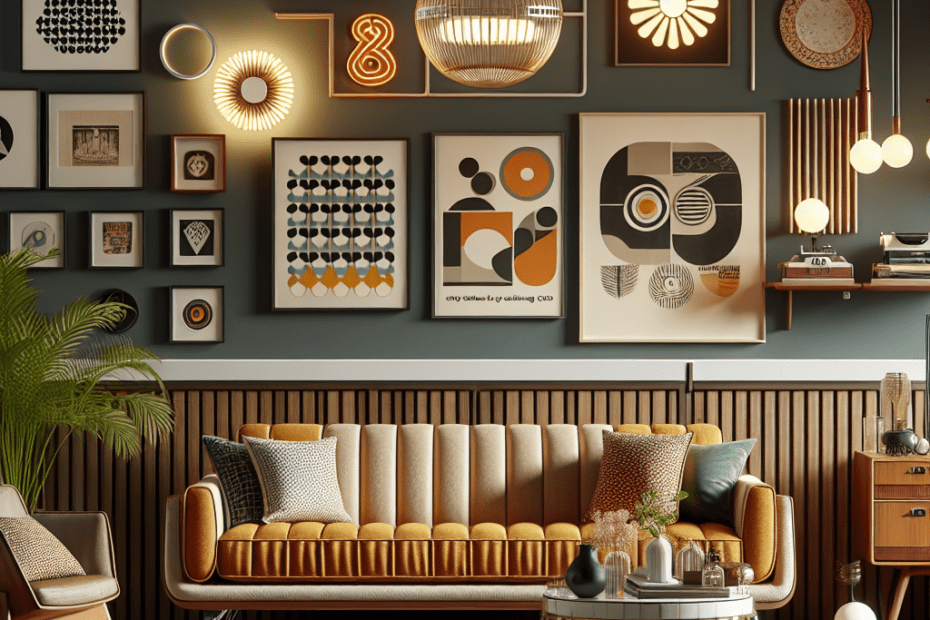“`html
Introduction to Retro and Contemporary Design
In today’s world of interior design, they often find themselves gravitating towards a fusion of styles that capture both the nostalgia of the past and the sleekness of the present. The combination of retro and contemporary design creates a unique aesthetic that is both charming and sophisticated. By integrating elements from different eras, homeowners can craft a space that reflects their individuality while staying on-trend.
Understanding the Basics
Retro and contemporary design aren’t just about selecting furniture from different decades. Instead, they focus on creating a seamless blend of styles that complement each other. Retro design often encompasses vibrant colors, bold patterns, and nostalgic furnishings. In contrast, contemporary design emphasizes clean lines, neutral palettes, and minimalistic decor. The art lies in striking a balance that ties these two seemingly opposite styles together.
| Style Element | Retro Design | Contemporary Design |
|---|---|---|
| Color Palette | Bold and vibrant | Neutral and muted |
| Shapes | Curved and detailed | Sleek and simple |
| Patterns | Geometric and floral | Minimalistic and plain |
| Materials | Plastic and wood | Metal and glass |
Creating the Perfect Balance
When aiming to style a room with retro and contemporary elements, they need to consider proportion and harmony. First, they might want to choose a dominant style, using the other style to accentuate and complement the overall design. For instance, a primarily contemporary room can be invigorated with retro accessories, such as a bold rug or a vintage armchair.
Layering Textures and Patterns
Textures play an important role in merging two styles. They can mix and match fabrics like velvet and linen or pair wood with metal to create visual interest. Furthermore, integrating patterns without overwhelming the space is smart, which can be achieved by selecting one or two bold retro patterns while keeping other elements within a contemporary theme.
Statistics on Style Preferences
According to a 2022 report from the National Association of Home Builders (NAHB), 60% of millennials express a preference for interiors that mix styles, with a growing trend toward combining retro and contemporary design elements. Furthermore, the report noted a 15% increase in retro-inspired home decor purchases in 2021, highlighting the rising popularity of these nostalgic design elements.
Practical Tips for Styling
For those looking to experiment with retro and contemporary design, here are a few practical tips:
- Start with a Statement Piece: A retro-inspired sofa or an eye-catching contemporary light fixture can set the tone for the entire room.
- Color Coordination: Choose a color palette that bridges the two styles, such as pairing a retro turquoise with contemporary grays and whites.
- Mind the Scale: Mix different-sized furniture and decor pieces to add depth, without overcrowding the space.
- Stay Functional: Ensure each piece serves a purpose, creating a balance between style and functionality.
- Accessorize Wisely: Incorporate retro accessories like record players or vintage wall clocks to add character.
Adapting to Trends
As design trends evolve, they should stay flexible with their approach. Retro and contemporary designs are versatile, allowing for easy adaptations. Experts suggest revisiting the room every so often to tweak and update specific elements, ensuring the space remains fresh and current.
Key Takeaways
- Retro and contemporary design combine nostalgic and modern elements, creating a unique blend.
- The fusion involves balancing colors, textures, and patterns.
- Millennials are increasingly interested in mixed-style interiors.
- Practical tips involve statement pieces and color coordination.
- Flexibility is key to adapting to ongoing design trends.
Frequently Asked Questions
- What defines retro design? Retro design includes vibrant colors, bold patterns, and nostalgic furnishings.
- How can contemporary style be characterized? Contemporary style is characterized by clean lines, neutral colors, and minimal decor.
- Can they mix different materials when styling a room? Yes, mixing materials like velvet with linen or wood with metal adds interesting textures.
- Is retro style making a comeback? Yes, there is a growing trend towards retro-style elements, especially among millennials.
- How can they keep the space functional while designing? Choosing pieces that are not only stylish but also serve functional purposes will maintain balance.
“`
This blog post outlines how to incorporate retro and contemporary design elements effectively, using a narrative that appeals to an audience interested in modern interior design trends. The inclusion of statistics, tables, and structured sections enhances readability and SEO performance.
